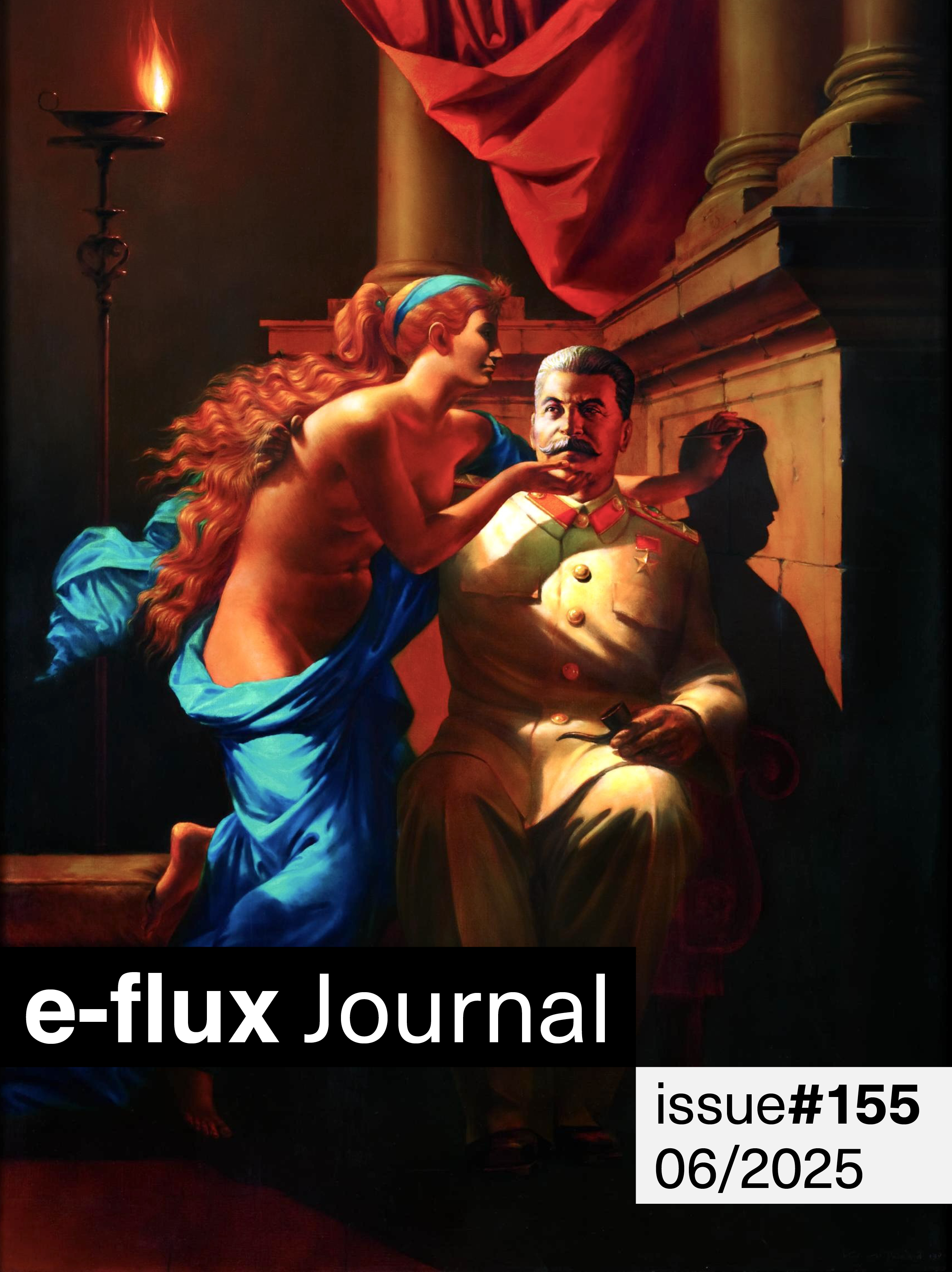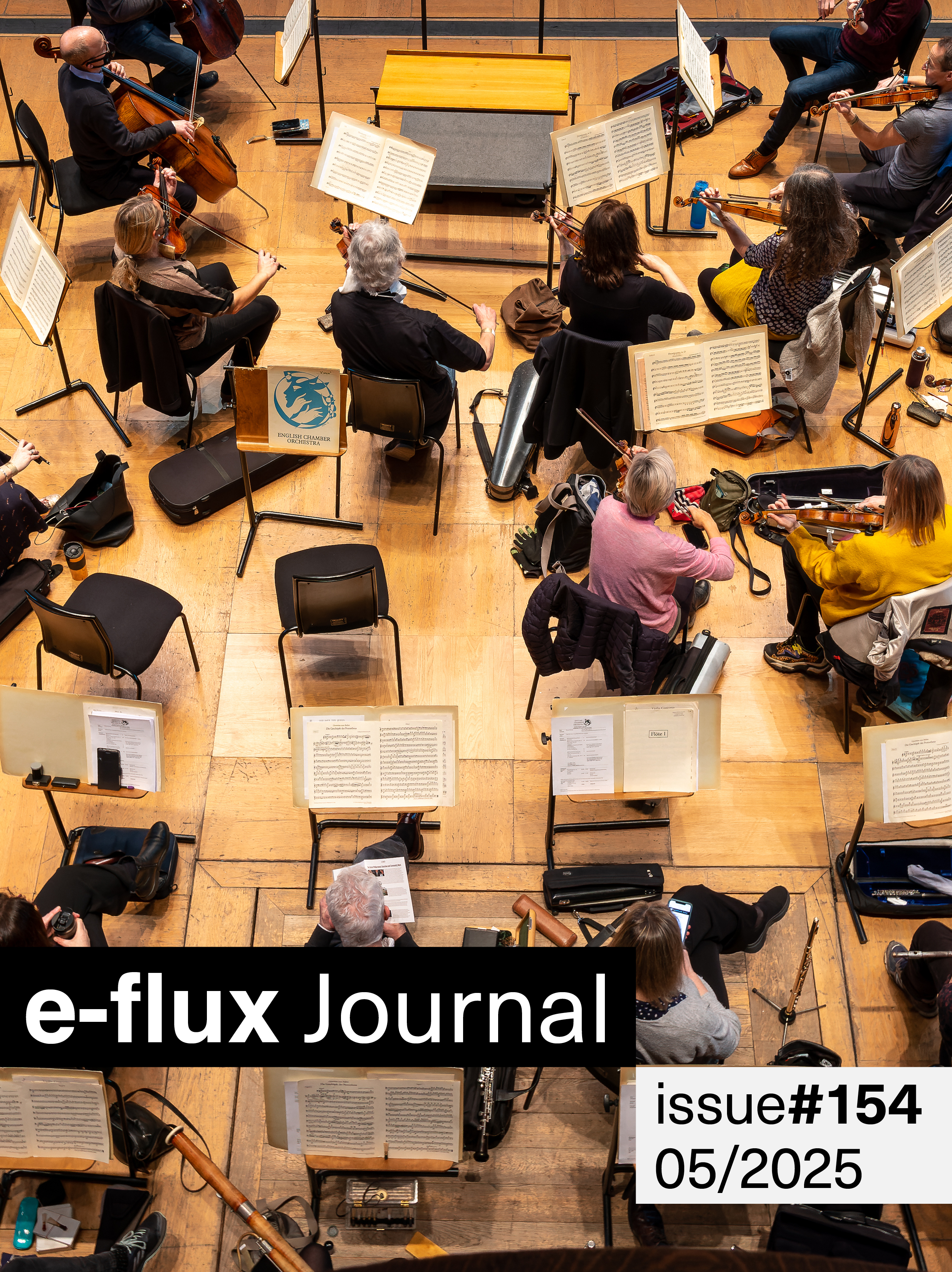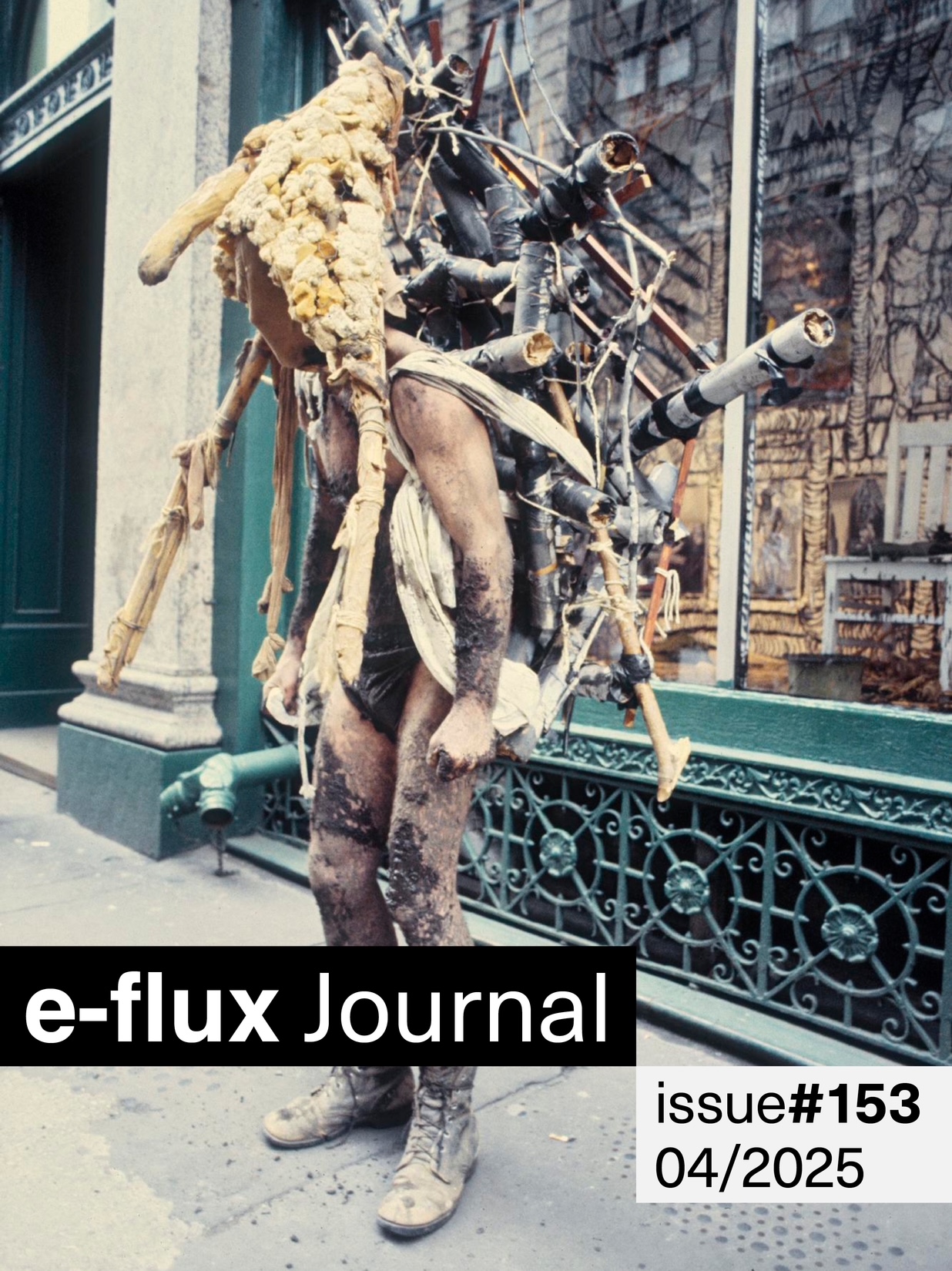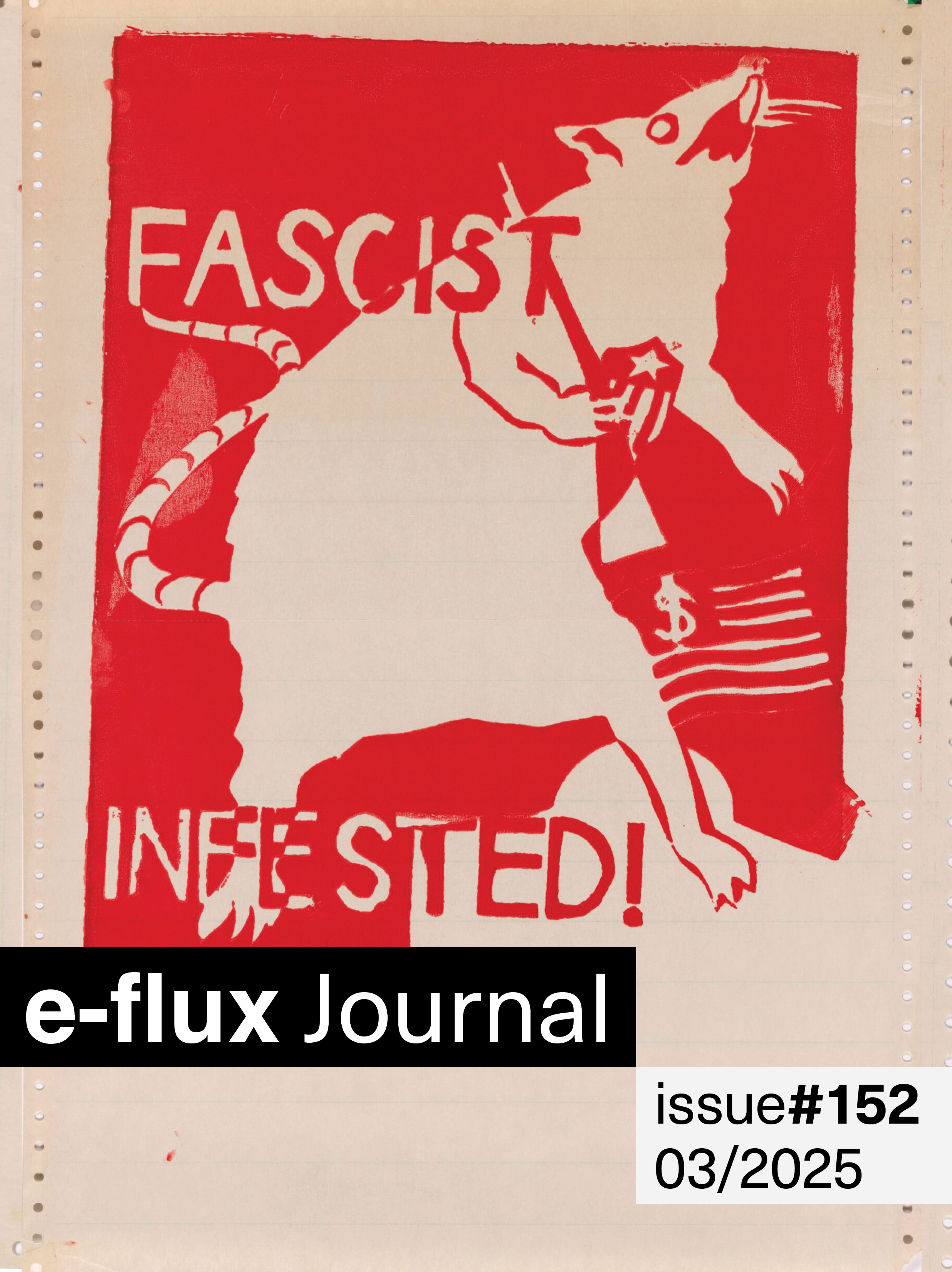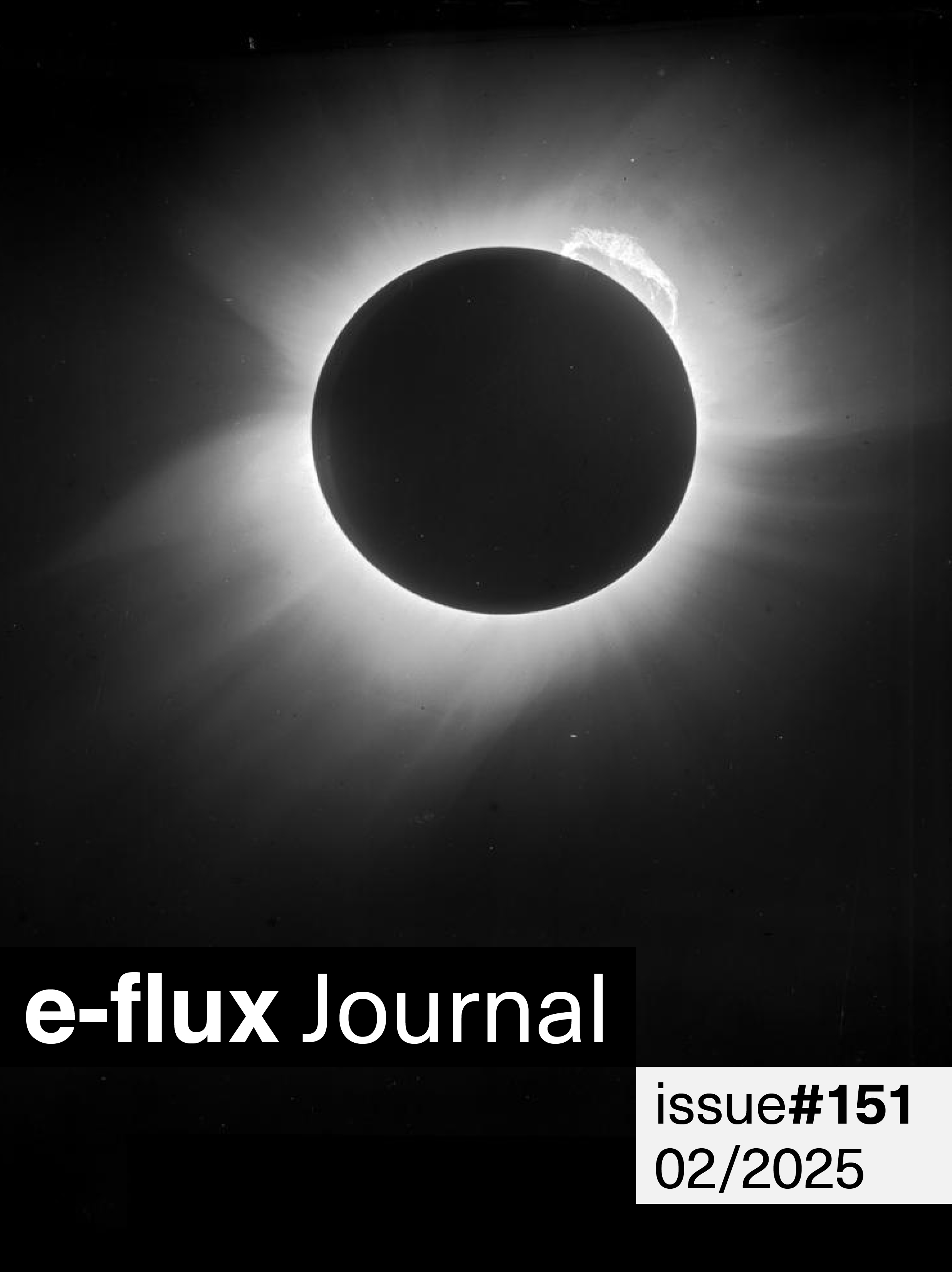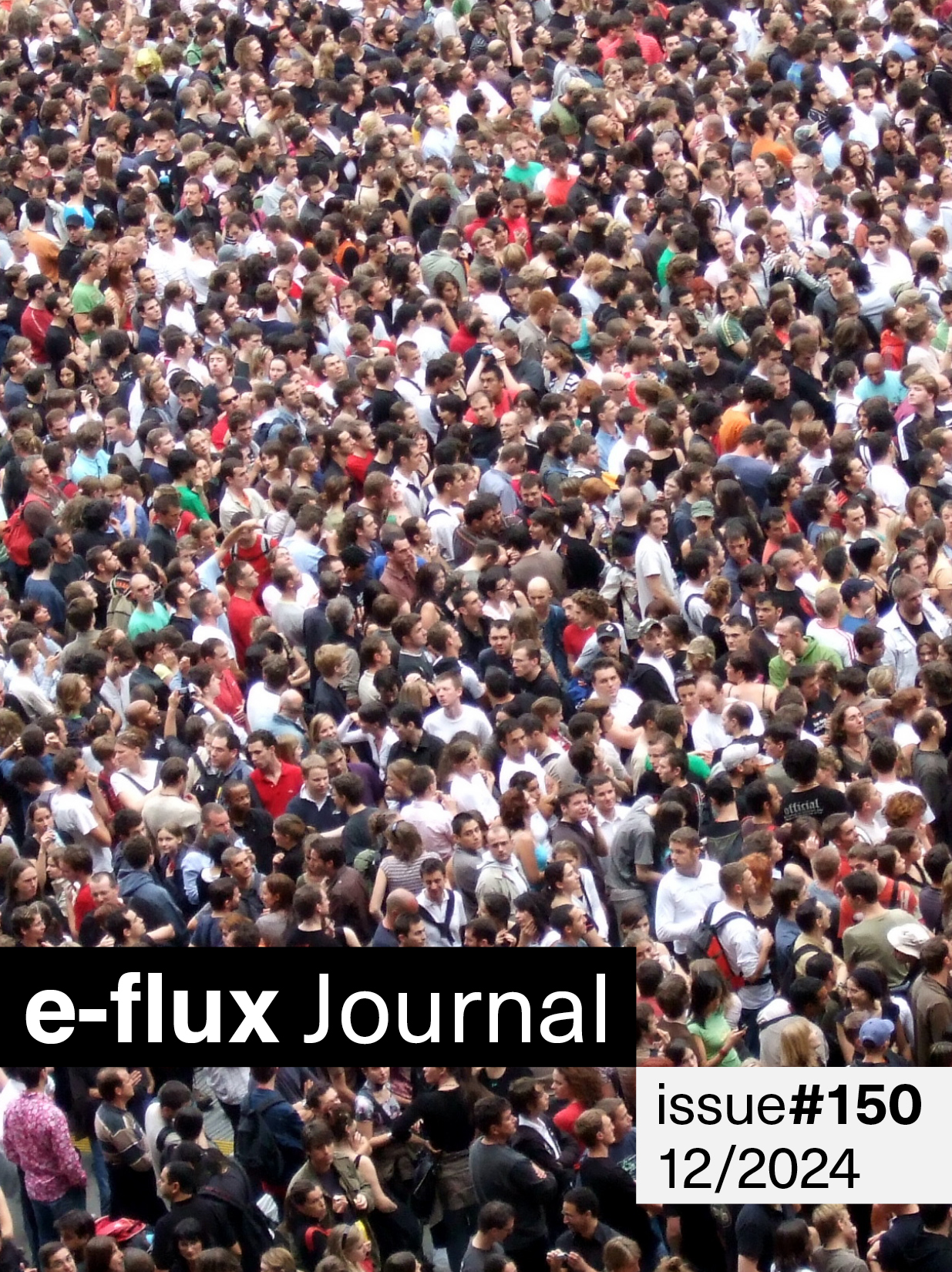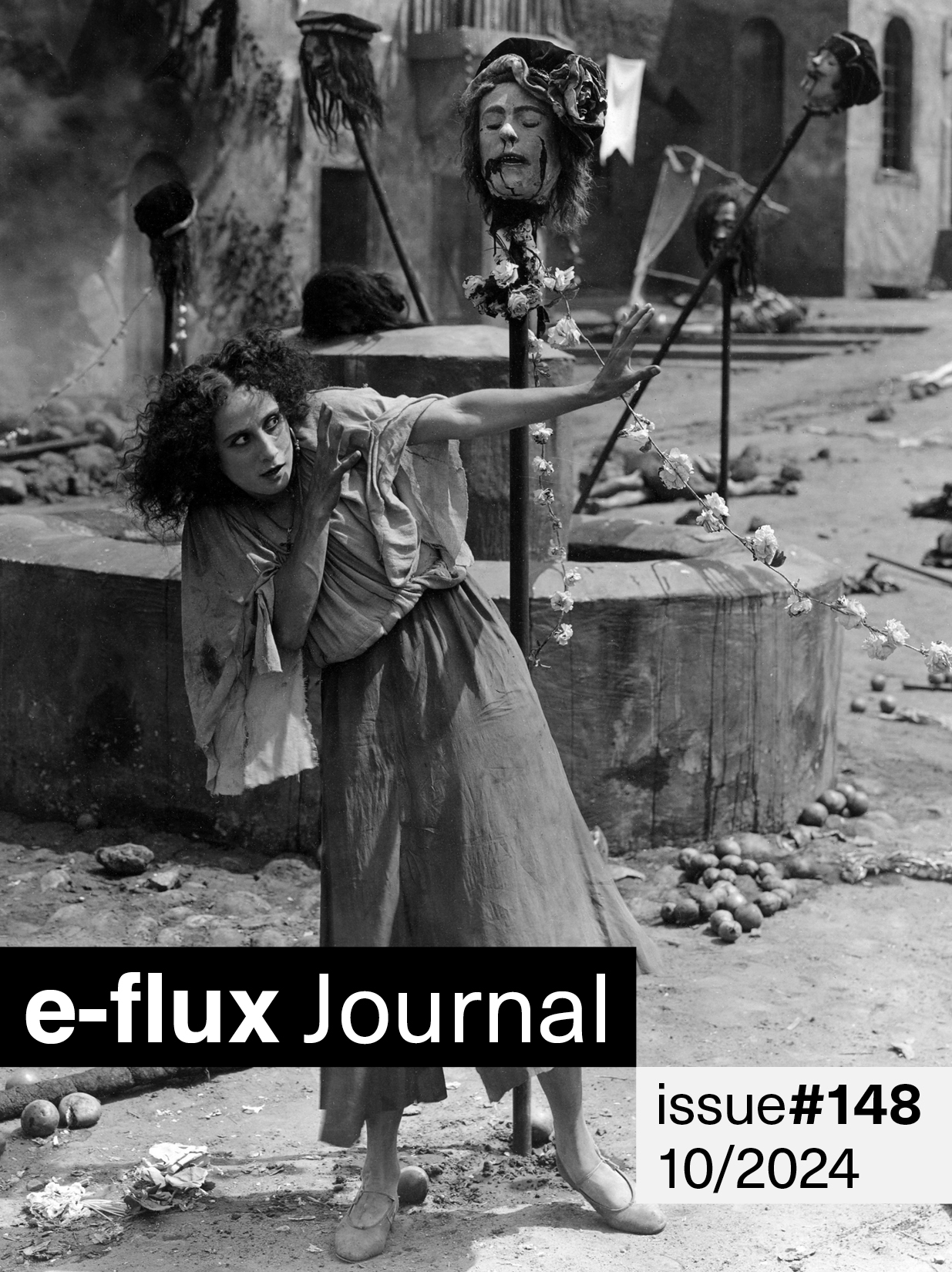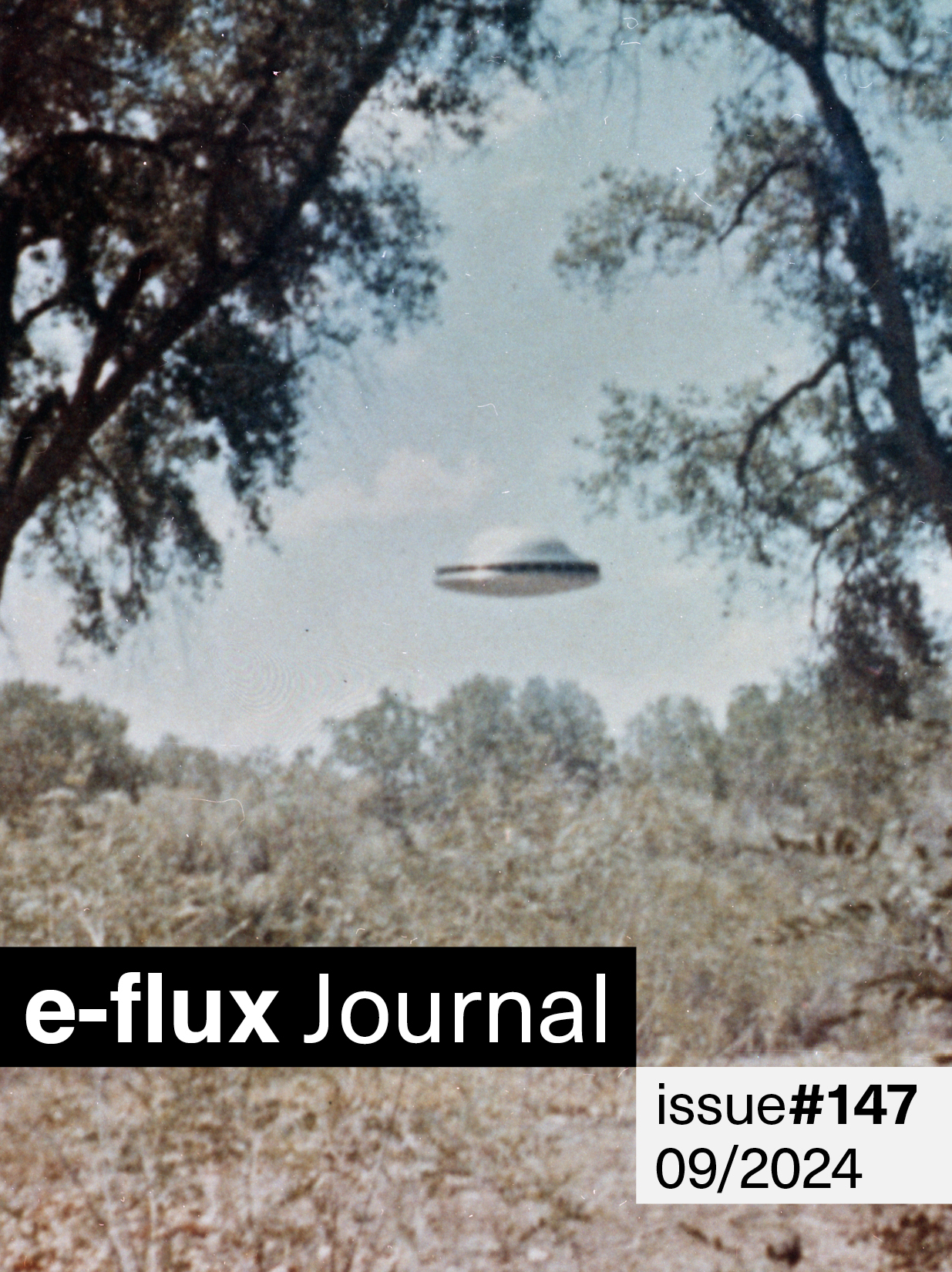e-flux journal issue 83 "The New Brutality"
guest-edited by Rosi Braidotti, Timotheus Vermeulen
with Nina Power, Steffen Krüger, Geert Lovink, Shumon Basar, Aaron Schuster, Erika Balsom, Marion von Osten, James T. Hong, and Franco "Bifo" Berardi
Every December, dictionaries and language societies across the globe identify the “words of the year”—words that resonated widely during the previous twelve months. In the mid-2000s, these lists were populated with words like “contempt” and “quagmire,” “ambivalence” and “conundrum.” A few years later, dominant words included “trepidation” and “precipice” and “fail,” “vitriol” and “insidious” and “bigot.” The OED’s word of the year for 2012 was “omnishambles.” 2016, however, was for OED the year of “post-truth.” Merriam-Webster selected the word “surreal.” In the wake of Brexit and the US elections, Russia’s annexation of the Crimea and Turkey’s disregard for journalistic freedom, fake news and ever more puzzling hacks, and violence, all that violence, we are no longer just nervous about the state of the world: we are perplexed—bewildered in a wasteland of signs that were once familiar but no longer make any sense.
At what point did the balance of public discourse tip in favor of “post-truth”? When did lying, boasting, and bullying become the rules of the political game? The term “populism” does not even approximate the bad-faith tribalization and base savagery these developments elicit, or the racism and xenophobia they inspire. The degradation of the rights of women and members of the LBGTQ community is constitutive and fundamental to the cruelty and destructiveness that have run wild the past few years. Taking our cue from online discussions about “brutalism” as a sociopolitical attitude, but with a distinct awareness of the term’s architectural legacy, in this issue we propose the new brutality.
Whether one lives in the US or in Egypt, Russia or the UK, The Netherlands or Brazil, we are confronted with a public sphere that is rapidly devolving, its privileges dissolving. Consider the proto-fascism of all those extreme right movements and the spineless political opportunism of the “centrist” right. Consider the corresponding intransigent puritanism of some popular leftist factions. As the political parameters stretch, ideological positions stiffen. These zero-sum views surrender reality to the domain of statistical overlords and data-as-opinion, capitulations which are especially worrying in the context of the alt-right affect: pirates angrily plundering those postmodern achievements of intersubjectivity, deploying bots and fake news to radically undermine (for political purposes as much as for profit and fun) the “fourth estate”—the press, traditionally the last resort for checking power before an uprising or militant upheaval. In the midst of this, governance by parliamentary representation is replaced by the tyranny of popular referenda. Grassroots interest groups echo the neoliberal reiteration of the rights of the individual. Public debates are increasingly indistinguishable from the rough and gullible “democracy” of the screen—we’re thinking here of the manipulation of algorithms through satellite websites as well as the social media echo chambers of outrage and shame. Experts are not just censored but effectively banned from the public sphere.
Indeed, all those facts liquefied into “flows” in the past decades now harden—if only for a moment—into pulp fictions, from Hillary Clinton’s pizza sex ring to the Flat Earth Society to the baseless incriminations of refugees in Germany. In times where even quality newspapers have foregone reporting in favor of opinion, their headlines churning with indeterminate snark, we no longer compete only with sensation, but with untruth itself.
What we once called civil society has fractured into countless pieces, small and hard—with little civility left between them. For whatever their material particularities, these discursive animatronics share a wholesale rejection of complexity. They induce a systemic leveling-down, a flattening of structural distinctions; they encourage a reduction of subtlety and intelligent or imaginative ambiguities in favor of monosyllabic sound bites, simplifications, and a readiness to insult and humiliate interlocutors. The new brutality is bewildering in its ability to consolidate individual, irrational, and antisocial preferences. The gangsterization of the social sphere by way of structurally rewarding and even monetizing bloodlust and naked cruelty leaves little room for argument. Politics is reduced to picking your own tribe and following a leader who could easily be a sociopath or a pyromaniac. Loyalty is a visceral issue, not a matter of reason: right or wrong, “he” is our man (as the fuss about Trump and Macron’s handshake demonstrated, the gender in this saying is certainly not accidental).
The purpose of this issue of e-flux journal is to take a firm stance on the new brutality, a stance beyond critical bewilderment. We declare our faith in the persistence and power of critical intelligence. We want to both reflect on the ramifications of this new brutality for cultural practices, and contemplate the extent to which the arts and humanities in the wider sense might interfere in this imaginary, dismantling it, perverting it, altering it. We have invited thinkers from across the disciplinary spectrum: new media studies and philosophy, psychoanalysis and art history, critical theory and film studies. These contributions offer strategic points of interference, positions from which to reterritorialize the debate beyond the rule of the bullies currently running it into the ground—by all appearances intentionally. The battle lines are manifold: language (James T. Hong, Nina Power), memeticism (Geert Lovink), the gaze (Shumon Basar), child psychology (Aaron Schuster), trauma theory (Steffen Krüger), neuroplasticity and algorithms (Bifo), and even reality (Erika Balsom). If the brute operates through the fist, however tiny that fist may be, the subject theorized here comes to the debate with an open hand—the hand of Foucault’s judoka, trusting and compassionate, but always ready to take over and redirect the energy elsewhere.
—Rosi Braidotti, Timotheus Vermeulen, Julieta Aranda, Brian Kuan Wood, Stephen Squibb, Anton Vidokle
In this issue:
Nina Power—The Language of the New Brutality
The alt-right may not believe that what they are doing is “rational,” but they certainly think that they are a lot more reasonable than the “social justice warriors” they oppose, and that tactics of irony and scorn are ways of undermining perceived irrationalisms on the part of the liberal left. We need to think much more carefully about the word-images that surround us, to make distinctions between the way violence is described and presented, and not think that all images are equally interchangeable. We need to remember all the words and ways of speaking we have forgotten, and note the way in which certain words, such as “cuck,” come to dominate our ways of speaking and thinking. We need to remain, not with Trump’s idiotic exclamation mark, but with the question mark, “the most important of all punctuation marks. A position in direct opposition to National Socialist intransigence and self-confidence.”
Steffen Krüger—Barbarous Hordes, Brutal Elites: The Traumatic Structure of Right-Wing Populism
All across the hoaxmap, the refugees’ barbarity is characterized by a sexuality that careens between the extremely oral and anal, i.e., the totally uninhibited and the hysterically controlled. The result is that a perverse notion of innocence emerges: these fantasy-foreigners are a force of nature and, as such, they simply cannot be blamed in any conventional sense for their wrongdoings. They are beyond the reach of rationality. They cannot be reasoned with; they can only be stopped by other means. This putative irresponsibility of the refugees is crucial, because it allows for the entire responsibility for their imaginary crimes to be placed at the feet of the elites.
Geert Lovink—Overcoming Internet Disillusionment: On the Principles of Meme Design
Meme producers have become immune to the criticism of third-way liberal moralists. Their firewall of indifference has not yet been hacked. Ironic deconstruction isn’t doing the job either. Says Tara Burton: “Given the ideological anarchy inherent in shitposting, it tends to defy analysis. Shitposters, who are bound by nothing, set a rhetorical trap for their enemies, who tend to be bound by having an actual point.” Burton concludes that “shitposting can’t be refuted; it can only be repeated.” This is simply not the age of the Renaissance (Wo)Man. The disillusionment is overwhelming.
Shumon Basar—LOL History
Duan Thi Huong’s body floats in the darkness of her image, equally glowing, and also dissolving, like smeared data. That auratic glow may simply be what happens when sophisticated technology colludes with its own technical limits. But it’s also the glow found in some of Gerhard Richter’s best-known paintings of women. The inferred illumination of technology’s soul. The substance Roland Barthes mourned in his elegy to his dead mother, Camera Lucida (1980). The impasto paste around Duan Thi Huong also invokes the charged zones encircling Willem de Kooning’s Women: vortices of matter, history, horror. Except in Huong’s case, the horror is emblazoned in the letters “L,” “O,” and “L.” This way, her image carries its own punch line, which seems so mordantly—or is it courageously?—at odds with cold-hearted killing.
Aaron Schuster—Primal Scream, or Why Do Babies Cry?: A Theory of Trump
By the time it reaches the age of two years old, the average baby has cried four thousand times. A colicky baby can scream for hours on end, driving the parents to the brink of lunacy and despair. For all the heartache and suffering caused by babies’ crying, perhaps the worst offense is to the practice of philosophy. As Heloise of “Abelard and Heloise” fame complained: “Who can concentrate on thoughts of scripture or philosophy and be able to endure babies crying, nurses soothing them with lullabies, and all the noisy coming and going of men and women about the house?” In this situation there is only one possible revenge for a philosopher: to turn the troublesome obstacle to philosophical contemplation into a theoretical object itself.
Erika Balsom—The Reality-Based Community
Imagined communities are called into being through media, and the reality-based community is no different. Documentary cinema is its privileged means of imagination. Why? With a frequency not found in other forms of nonfiction image-making, documentary reflects on its relationship to truth. And unlike the written word, it partakes of an indexical bond to the real, offering a mediated encounter with physical reality in which a heightened attunement to the actuality of our shared world becomes possible. But precisely for these same reasons, documentary is simultaneously a battleground, a terrain upon which commitments to reality are challenged and interrogated.
Marion von Osten—Human Animal Song
cultured graded fondled
divided exhibited bred
appraised described hunted
killed pampered trained
James T. Hong—The Suspicious Archive, Part II: Every Word is a Prejudice
For fake news to exist, there must be a “real news.” A lot of news, or what counts as news in Taiwan, for instance, is a weak kind of fake news, because Taiwanese news stories are frequently too trivial even to be considered news (e.g., a new restaurant forgot to include free napkins). In these trivial cases, truth or falsity does not even matter. But the “fake” in fake news has a metaphysical component. What type of metaphysics is a criterion for distinguishing fake from real news? For most people, only another story or collection of stories can prove that a particular story is factually wrong (unless one actually witnessed the news-making event). There is no way for a regular reader to go above and beyond any particular news story to adjudicate its truth value from God’s point of view, so she can only arbitrate between competing stories filtered through her own prejudices and biases. Furthermore, something is usually off about any news story—a detail, a nuance, the choice of words, implicit and explicit prejudices.
Franco “Bifo” Berardi—The Second Coming
In 1919, Yeats expected the second coming of Jesus Christ. However, in the decade that followed, Jesus Christ did not come back. Hitler came.
So we should ask: What is going to happen now?
The print edition of e-flux journal can be found at:
Amsterdam: De Appel arts centre / Rijksakademie van beeldende kunsten Andratx: CCA Andratx Antwerp: M HKA Museum van Hedendaagse Kunst / Kunsthal Extra City Århus: Kunsthal Aarhus Athens: OMMU / State of Concept Auckland: split/fountain Austin: Arthouse at the Jones Center Baden-Baden: Staatliche Kunsthalle Baden-Baden Banff: Walter Phillips Gallery, The Banff Centre Barcelona: Arts Santa Mònica / MACBA Basel: Kunsthalle Basel / Museum für Gegenwartskunst Basel Beijing and Guangzhou: Vitamin Creative Space Beirut: 98weeks Belgrade: Cultural Center of Belgrade Bergen: Bergen Kunsthall / Rakett Berlin: b_books / Berliner Künstlerprogramm – DAAD / Bücherbogen am Savignyplatz GmbH / Books People Places / do you read me? / Haus der Kulturen der Welt / Motto / Neuer Berliner Kunstverein (n.b.k.) / Pro qm Belfast: Platform Arts Bern: Kunsthalle Bern / Lehrerzimmer Bialystok: Arsenal Gallery Bielefeld: Bielefelder Kunstverein Biella: UNIDEE - University of Ideas, Cittadellarte - Fondazione Pistoletto Onlus Birmingham: Eastside Projects / Ikon Gallery Bologna: MAMbo – Museo d'Arte Moderna di Bologna Bregenz: Kunsthaus Bregenz Bristol: Arnolfini Brussels: WIELS Contemporary Art Centre Bucharest: National Museum of Contemporary Art Bucharest (MNAC) / Pavilion Unicredit Cairo: Beirut / Contemporary Image Collective (CIC) / Townhouse Gallery Calgary: The New Gallery Cambridge: Wysing Arts Center Castello: Espai d´art contemporani de Castelló (EACC) Chicago: Graham Foundation / Reva and David Logan Center for the Arts / The Renaissance Society at The University of Chicago Cologne: Kölnischer Kunstverein Copenhagen: Overgaden Derry: CCA Derry~Londonderry Dijon: Les Ateliers Vortex Dublin: Dublin City Gallery The Hugh Lane / Project Arts Centre Dusseldorf: Kunstverein für die Rheinlande und Westfalen Eindhoven: Van Abbemuseum Frankfurt: Städelschule / Portikus Gdansk: Łaźnia Centre For Contemporary Art Geneva: Centre de la photographie Ghent: S.M.A.K. Glasgow: CCA Centre for Contemporary Arts / Glasgow Sculpture Studios Graz: Grazer Kunstverein / IZK Institute for Contemporary Art, TU Graz / Kunsthaus Graz / Künstlerhaus KM– / para_SITE Gallery / Grijon: LABoral Centre for Art and Creative Industries Groningen: University of Groningen Hamburg: Kunstverein in Hamburg Helsinki: Museum of Contemporary Art Kiasma Hobart: CAST Gallery / INFLIGHT Hong Kong: Asia Art Archive Iași: theartstudent at the University of Fine Arts, Iași Innsbruck: Galerie im Taxispalais Istanbul: BAS / DEPO / Galeri Zilberman / SALT Johannesburg: Center for Historical Reenactments Kansas City: La Cucaracha Press Klagenfurt: Kunstraum Lakeside Kristiansand: SKMU Sørlandets Kunstmuseum Kyiv: Visual Culture Research Center Leeds: Pavilion Lisbon: Maumaus, Escola de Artes Visuais / Oporto / Kunsthalle Lissabon Ljubljana: Moderna galerija Llandudno: MOSTYN London: Architectural Association—Bedford Press / Calvert 22 / Chisenhale Gallery / Gasworks / ICA / Serpentine Gallery / The Showroom / Visiting Arts Los Angeles: REDCAT Loughborough: Radar, Loughborough University Luxembourg: Casino Luxembourg Madrid: Brumaria / CA2M / PENSART Maastricht: Jan van Eyck Academie Marfa: Ballroom Marfa Melbourne: Monash University Museum of Art (MUMA) / World Food Books Merrylands: Cerdon College Mexico City: Librería Casa Bosques / Proyectos Monclova Milan: Fondazione Nicola Trussardi / HangarBicocca Milton Keynes: MK Gallery Minneapolis: Walker Art Center Monaco: Nouveau Musée National de Monaco Moncton: Fixed Cog Hero (a bicycle courier company) Montreal: Canadian Centre for Architecture (CCA) Moscow: Garage Center for Contemporary Culture Munich: Haus der Kunst / Museum Villa Stuck / Walther Koenig Bookshop New Delhi: Sarai CSDS New York: e-flux / Independent Curators International (ICI) / Printed Matter, Inc / McNally Jackson Nottingham: Nottingham Contemporary North Little Rock: Good Weather Gallery Omaha: Bemis Center for Contemporary Arts Oslo: Kunstnernes hus Oxford: Modern Art Oxford Padona: Fondazione March Per L'Arte Contemporanea Paris: castillo/corrales – Section 7 Books / Centre Pompidou / Les Laboratoires d'Aubervilliers Philadelphia: Bodega Pori: Pori Art Museum Portland: Portland Institute for Contemporary Art (PICA) / Publication Studio Porto: Museu de Arte Contemporânea de Serralves Prague: DOX Centre for Contemporary Art Prishtina: Stacion – Center for Contemporary Art Prishtina Providence: AS220 Reykjavik: Reykjavik Art Museum Riga: kim? Rio de Janeiro: Capacete / A Gentil Carioca Rome: MACRO Museo d'Arte Contemporanea Roma / Opera Rebis Rotterdam: Piet Zwart Institute / Witte de With | Center for Contemporary Art Saint-Nazaire: Le Grand Cafe, centre d'art contemporain Salzburg: Salzburger Kunstverein San Antonio: Artpace San Sebastián: Centro Internacional Cultura Contemporanea São Paulo: KUNSTHALLE São Paulo / Master in Visual Arts, Faculdade Santa Marcelina Sarajevo: Sarajevo Center for Contemporary Art (SCCA) Seoul: The Books / The Book Society Sherbrooke: Foreman Art Gallery of Bishop's University Singapore: The Ngee Ann Kongsi Library Skopje: Press to Exit Project Space Sofia: ICA-Sofia / Sofia Art Gallery / SWIMMING POOL St Erme Outre et Ramecourt: Performing Arts Forum St Louis: White Flag Projects Stockholm: Bonniers Konsthall / Iaspis / Index - The Swedish Contemporary Art Foundation / Konstfack, University College of Art, Craft and Design / Konsthall C / Tensta konsthall Stuttgart: Württembergischer Kunstverein Stuttgart Tallinn: Kumu Art Museum of Estonia The Hague: Stroom Den Haag Toronto: Art Metropole / Mercer Union / The Power Plant Torun: Centre of Contemporary Art Znaki Czasu in Torun (CoCA) Toowoomba: Raygun Contemporary Art Projects Trieste: Trieste Contemporanea Trondheim: NTNU University Library Umeå: Bildmuseet, Umeå University Utrecht: BAK, basis voor actuele kunst / Casco – Office for Art, Design and Theory Vaduz: Kunstmuseum Liechtenstein Valencia: IVAM–Biblioteca Valletta: Malta Contemporary Art Foundation Vancouver: Artspeak / Fillip—Motto / Morris and Helen Belkin Art Gallery, University of British Columbia / READ Books, Charles H. Scott Gallery, Emily Carr University of Art and Design Venice: The Biennale Library-ASAC Vienna: Kunsthalle Wien / Salon für Kunstbuch—21er Haus Vigo: MARCO, Museo de Arte Contemporanea de Vigo Vilnius: Contemporary Art Centre (CAC) Vitoria-Gasteiz: Centro Cultural Montehermoso Kulturunea Visby: BAC – Baltic Art Center Warsaw: Zachęta National Gallery of Art Wiesbaden: Nassauischer Kunstverein (NKV) Yerevan: Armenian Center For Contemporary Experimental Art (NPAK) Zagreb: Galerija Miroslav Kraljevic / Gallery Nova / DeLVe | Institute for Duration, Location and Variables Zurich: Postgraduate Program in Curating, Zürich University of the Arts / Shedhalle / White Space

